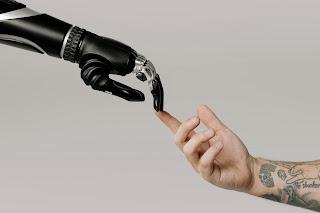In our ever-evolving world, the use of models has become indispensable across various fields, from science and engineering to economics and healthcare. Models serve as simplified representations of complex systems, aiding in understanding, prediction, and decision-making. Let's delve into the intricacies of models, their types, applications, development, challenges, and future trends.
1. Introduction to Models
Models, in the broadest sense, are simplified representations of real-world phenomena. They capture essential features of a system while abstracting away unnecessary details. Models play a crucial role in virtually every aspect of human endeavor, providing insights into natural processes, facilitating problem-solving, and guiding policy decisions.
2. Types of Models
Physical Models
Physical models are tangible representations of objects or systems. They range from scale replicas of buildings and bridges used in architecture and civil engineering to anatomical models employed in medical education.
Mathematical Models
Mathematical models utilize mathematical equations to describe the behavior of a system. These models are highly versatile and are used extensively in fields such as physics, chemistry, and economics to analyze and predict outcomes.
Computer Models
Computer models, also known as simulation models, rely on computational algorithms to simulate the behavior of complex systems. These models are prevalent in disciplines like climate science, where they simulate weather patterns, and in finance, where they forecast market trends. For More AI Learning Articles visit https://masteraionline.blogspot.com/
3. Applications of Models
Models find applications across a diverse array of fields:
Engineering
In engineering, models are used for designing structures, optimizing processes, and simulating the performance of mechanical, electrical, and civil systems.
Medicine
In medicine, models aid in understanding diseases, predicting treatment outcomes, and simulating physiological processes for research purposes.
Economics
Economic models help economists analyze market dynamics, forecast economic trends, and evaluate the impact of policy interventions.
Weather Forecasting
Meteorological models simulate atmospheric conditions to forecast weather patterns, enabling timely warnings and preparations for extreme events.
4. Characteristics of Effective Models
Accuracy
Effective models should accurately capture the essential features of the system they represent, minimizing errors and discrepancies between predictions and observations.
Simplicity
Simplicity is key in model development, as overly complex models may be difficult to interpret and prone to overfitting. A balance between complexity and explanatory power is essential.
Predictability
Models should exhibit predictability, meaning they can reliably forecast future states or outcomes based on initial conditions and input parameters.
5. Development of Models
The development of models typically involves several stages:
Data Collection
Data collection is the foundation of model development, providing the empirical basis for constructing and validating the model.
Model Construction
Model construction entails formulating mathematical equations, algorithms, or physical representations that describe the system under study.
Validation and Refinement
Validation involves comparing model predictions with real-world observations to assess its accuracy and reliability. Refinement may be necessary based on validation results.
6. Challenges in Modeling
Despite their utility, modeling poses several challenges:
Data Limitations
Models are only as good as the data used to build them. Data limitations, such as incompleteness or inaccuracy, can undermine the reliability of the model.
Assumptions
Models often rely on simplifying assumptions to make complex systems manageable. However, these assumptions may not always hold true, leading to discrepancies between model predictions and reality.
Interpretation of Results
Interpreting model results requires careful consideration of assumptions, limitations, and uncertainties to avoid misinterpretation or misapplication.
7. Examples of Successful Models
Newton's Laws of Motion
Newton's laws revolutionized our understanding of motion and form the basis of classical mechanics, enabling precise predictions of planetary orbits and mechanical systems.
Black-Scholes Model
The Black-Scholes model revolutionized options pricing and laid the foundation for modern financial derivatives markets.
Epidemiological Models
Epidemiological models, such as the SIR model, are instrumental in understanding and controlling the spread of infectious diseases, as demonstrated during the COVID-19 pandemic.
8. Future Trends in Modeling
Artificial Intelligence and Machine Learning
Advancements in artificial intelligence and machine learning are transforming modeling by enabling the development of more sophisticated and data-driven models across various domains.
Big Data Analytics
The proliferation of big data is fueling the development of models capable of processing and analyzing vast amounts of data, leading to more accurate predictions and insights.
Interdisciplinary Collaborations
The future of modeling lies in interdisciplinary collaborations, where experts from different fields collaborate to develop holistic models that capture the complexity of real-world systems.
9. Conclusion
Models are invaluable tools for understanding, predicting, and managing complex systems in diverse fields. As technology advances and interdisciplinary collaborations flourish, the future promises even greater advancements in modeling, enabling us to tackle pressing challenges and unlock new frontiers of knowledge.
Frequently Asked Questions (FAQs)
1. How are models validated?
Models are validated by comparing their predictions with real-world observations and data. If the model's predictions closely match observed outcomes, it is considered validated.
2. Can models accurately predict the future?
While models can provide valuable insights and forecasts, predicting the future with absolute certainty is often challenging due to uncertainties and unforeseen variables.
3. What are some common pitfalls in modeling?
Common pitfalls in modeling include overfitting, where the model performs well on training data but poorly on new data, and underestimating uncertainties and assumptions.
4. How do models contribute to scientific research?
Models play a crucial role in scientific research by providing a framework for hypothesis testing, data interpretation, and the exploration of complex phenomena beyond the scope of empirical observation.
5. Are models infallible?
No, models are not infallible. They are simplifications of reality and are subject to limitations, uncertainties, and errors inherent in the modeling process.

Comments
Post a Comment